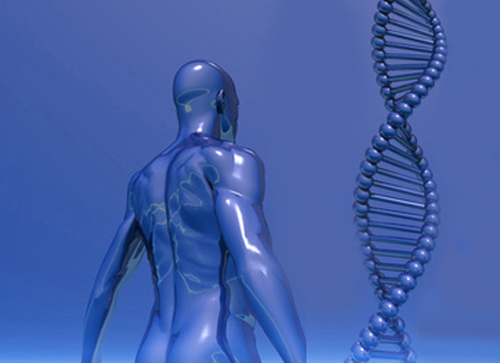
Researchers at the Ludwig-Maximilians-Universität (LMU) in Munich’s Christoph Klein Lab, have discovered the role of a membrane bound protein involved with the development of T Cells that may also play a role in the development of a group of rare diseases.
Genetic mapping is a key component in understanding rare diseases, and is usually accomplished by grouping patients and sequencing their genomes to determine the common mutation. In this study, researchers discovered a gene that codes for an immune cell protein, that when mutated can lead to the development of different types of rare genetic diseases.
All biological cells are bounded by a lipid bilayer known as the plasma membrane. The cells of higher organisms contain specialized intracellular membrane compartments, called organelles, each of which interact with each other and with the plasma membrane. The highly dynamic functional interplay between these membrane systems play a vital role in many biological processes, and are essential for normal cell function and survival. A new report published by group of researchers led by Christoph Klein (professor of Pediatrics at Dr. von Hauner Children’s Hospital, which is part of the LMU Medical Center) throws new light on the action of a key component of this network, and uncovers its significance for the development and function of human T cells.
Klein’s research focuses on rare genetic diseases that manifest at an early age and whose etiology is unknown. “In the case that concerns us here, we were able to identify mutations in one specific gene in a cohort of 10 patients identified by the global Care-for-Rare Alliance, which I initiated some years ago. This gene codes for a key protein called FCHO1, which is found at the plasma membrane,” Klein explains. “In all, we discovered six different mutations in this gene, each of which interferes with the protein’s normal function.” All of the children affected suffer from severe, life-threatening immune deficiencies associated with defective T-cell function. These genetic studies imply that FCHO1 as a single gene is involved with all of them, and thus plays an essential role in biological processes.
This inference is supported by earlier findings that show FCHO1 acts as an early stage mediator in clathrin-coated endocytosis (CCE). CCE is responsible for the uptake of fluids and the retrieval of proteins from the cell membrane, at sites that are marked by binding of clathrin to the plasma membrane surface. This interaction triggers the involution of a membrane patch, forming a clathrin-coated pit, which then rounds up and pinches off to yield a ‘clathrin-coated vesicle’. A mutation in FCHO1 could be expected to disrupt this process, which in turn could account for the immune deficiency observed in the affected children.
To test this hypothesis, Marcin Łyszkiewicz and Natalia Ziętara — joint first authors of the study — set out to characterize the consequences of the different mutations in the biological role of FCHO1 under defined experimental conditions.
To investigate the impact of the loss of FCHO1 at the cellular level, Łyszkiewicz and colleagues deleted the gene in a cultured T-cell line, and discovered that the mutant cells were unable to remove the activated T-cell receptor from the plasma membrane. This receptor protein is expressed on the surface of T cells, and is crucial for controlling their immunological functions. Once activated, FCHO1 induces various signaling pathways that regulate cellular immune response, which must be regulated and subsequently turned off at the appropriate time. “Unbalanced signaling can lead either to immune deficiencies like those observed in our patients, or cause autoimmune diseases,” says Klein.
The results of this study identify six mutations responsible for the mislocalization of FCHO1, or otherwise interfere with FCHO1’s ability to interact with its normal cellular binding partners. These findings imply that the immunological defects observed in the patient cohort can be attributed to a failure to initiate endocytosis at the plasma membrane.
Up to now, the significance of the FCHO1 protein for immunological function has not been recognized — perhaps because its association with severe combined immune deficiency in children has been overlooked for so long. “Our study is a very good example of how systematic studies of patients with rare genetic diseases can contribute to the discovery of new genes and signaling pathways that regulate the differentiation and function of the cells that orchestrate the immune system,” says Klein.
The outcome of this study not only enables the molecular diagnosis of the condition, it will also enhance the quality of the advice that genetic counselors can offer to affected families. Furthermore, the results provide new insights into fundamental functions of the human immune system at the cellular level. In collaboration with the Care-for-Rare Foundation’s international research network, Klein and his associates will continue to explore the intricate web of proteins that governs the behavior of the immune system.













